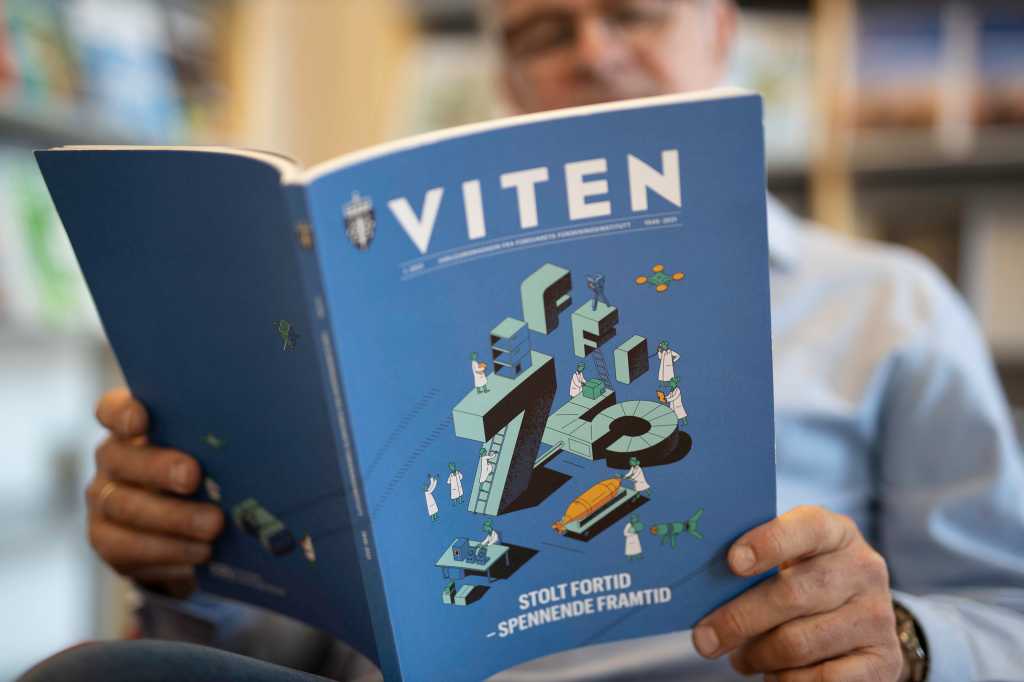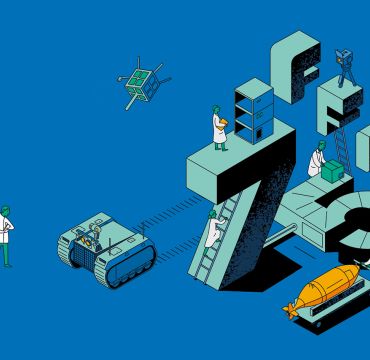FFI launches anniversary magazine in English
FFI marks 75 years with an anniversary magazine, in which former Director General John-Mikal Størdal states that FFI is James Bond’s “Q”.

“If the Norwegian Armed Forces is James Bond, then we are “Q”. You know the scientist who in every film provides Bond with innovations, technical solutions which proves useful just at the right moment”, Størdal states in the opening interview in the magazine.
Størdal, who now works in NATO, emphasize FFI’s great efforts since it was established in 1946.
The entire specter
A separate pull-out article goes into detail about the history and some of the major research achievements that FFI employees have contributed to.
The magazine covers the entire specter of the research that has been conducted at Kjeller and in Horten, FFI’s two locations. The Penguin missiles which was created in what was one of Norway’s largest research project, nanosatellites and autonomous submarines. Readers learn more about terrorist research, virus hunting, whale research, radioactive researchers, Norwegian napalm and the new trends that might change future warfare.
International cooperation
Many of the stories from FFI’s history were confidential at the time. FFI researchers has often worked together with American colleagues. The US was interested in as much information on what was happening in the Soviet Union as possible. This is especially true with regards to nuclear weapons testing and submarine movements. Through NATO-based research programs, FFI received funding in addition to what was allocated in the defence budgets.
Norway was – and still is – “NATO in the north”. The research and monitoring took place at FFI. “It was never more dangerous to live at Kjeller than during the days of the Cold War”, it is stated in the magazine.
FFI’s researchers worked closely with the Americans on the Bridge project, a submarine listening system based in northern Norway. Norwegian researchers were also involved in Arpanet, the forerunner of the Internet. The idea behind Arpanet was to prevent communication systems in US defence from failing in the event of a major Soviet nuclear attack.
Researchers from FFI developed the ground-penetrating radar RIMFAX which image the subsurface at Mars, one of the instruments on the NASA rover “Perseverance”. One of the main objectives is to find of if there has ever been life on the red planet.
Meet our employees
Many talented people are associated with FFI. Some of the 700 employees explain their research in the magazine. You can read about how their careers started and what it is like to work at FFI.
Like the 29-year-old mathematician Martin Vonheim, who researches sensors and unmanned drones.
“In the math classes at the upper secondary school, we were given a statistical assignment. It was to roll a dice thirty times, and then calculate the average. I ended up making a program that allowed me to roll the dice twenty million times. My teacher briefly remarked that it was ‘good’. I do not think she fully understood how it worked”.
How to make sure explosives do not explode when they should not? One of FFI’s summer students, Kristine Wiik (24) explain how she was engaged in the section working with rocket fuel and explosives, examining how such incidents should be prevented.
Research Leader Marte S. Kalveland talks about how they use the knowledge of the entire Institute in relation to the main customer, the Armed Forces. She defines what is one of the most important perspectives for FFI in the years to come:
“The Navy, Air Defence and Army cannot fight their own wars, they must interact and cooperate. How can we make that happen?”
Available online and on paper
FFI’s anniversary magazine contains the stories of both a proud past and an exciting future. You can either download the anniversary magazine or order the paper edition.
